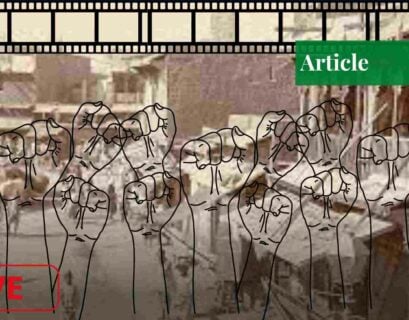Ms Abrish Nayyar is a student of BS Mass Communications at the National University of Sciences and Technology (NUST). Her subjects of interest are the history of the subcontinent, sociology, and mass media.
Digitalization has made news dissemination easier and more dynamic: creators and journalists can use features such as podcasts, maps, and hyperlinks to provide information in auditory, visual, or audio-visual mediums such as photographs, videos, and podcasts. This has given rise to what is known as “digital natives”—platforms that are not bound by a traditional set of practices and frequently experimented with their content and production, providing a different perspective on news.
Legacy media, on the other hand, refers to the outlets and channels that existed before the internet, such as television, radio shows, and newspapers. YouTube, in addition to traditional websites, is a platform used by both types of news providers. As a video-sharing site, it enables legacy outlets to broadcast the same content seen on television and expand their reach, whereas many digital natives have used it to start their journey in the world of journalism and build an audience.
Similarly, various social media platforms allow people to voice their opinions and give their own news stories a voice, though this usually results in subjective content and even false information. Legacy and digital media have both benefited from this, as nearly all outlets have social media accounts, allowing for easy dissemination to a wide range of audiences.
The arrival of digitalization tipped the scales, allowing more independence and the legacy media to expand their reach even further. As a result, digital natives emerged: people who work solely and independently for digital-only media outlets. Digital natives frequently have a limited budget and a niche audience. Certain platforms choose to attract viewers with sensationalized headlines, whereas others have unique content.
The main difference is in resources and reach: legacy media outlets can cover a wider range of topics, whereas digital natives are limited to a specific area or topic. A larger budget allows for higher-quality content, so legacy media outlets take the cake in this category. As a result, their audience engagement is significantly higher than that of digital natives.
There are some parallels, as both types of media are frequently biased, sensationalized, and subtly propagate their narratives. This approach, in some ways, helps the outlets gain more audience engagement and a loyal follower base because people prefer content that aligns with their views. Videos are an effective way to convey your message because they allow for visual storytelling as well as dialogue and voiceovers. This medium is truly a goldmine in journalism, and it is perhaps the most engaging means of sharing and informing news.
Journalists can communicate much more effectively with curated visuals, appropriate language, and creative graphics. The opportunities for audience engagement, in the form of likes, comments, and subscriptions, are perhaps the most important addition that video-sharing platforms provide that are overlooked in traditional media. Although YouTube is a mainstream platform that many companies and individuals use for video journaling, legacy media still has a larger viewership and audience.
As the digital world evolves and audience tastes and consumption styles change, it is equally important for all types of news platforms to adapt to maintain their influence and popularity. Mainstream media, once the primary source of credible news, is now viewed with suspicion and skepticism. One could argue that it is due to technological advancements in recent decades such as citizen journalism and the increased polarisation of mainstream media.
Fundamentally, credibility and trust in journalism are based on news transparency, which is a strategy for increasing public knowledge and empowerment by demystifying journalistic practices. Today, it is the intense sensationalization on social media that draws the public’s attention to news and events. The disruption caused by social media can also be used to explain the decline in trust in news. The content of mainstream media was filtered, and someone made an educated decision about what was newsworthy or not.
Now, social media allows users to define ‘newsworthiness’ in their own lives, as well as disseminate news about it—whether it’s about their own daily routine or political events on the other side of the world. Personal biases define people’s sense of credibility, and the rise of the internet and social media only facilitates this subjectivity. Hearing opinions that do not resonate with their own causes cognitive dissonance, which causes them to be selective in their news consumption to reduce the dissonance.
A significant issue we face in this digital era is the mixture of rumors, gossip, and hate speech in the ‘news,’ with tidbits of truth added. While digitalization has created many opportunities, the drawbacks of these opportunities are visible in fields such as journalism. Credibility in the media is a phenomenon as old as the medium itself. The public has always looked to journalists for trustworthy news, first in the form of newspapers, then radio, then television, and finally, the internet as a platform for this purpose.
Television captured the public’s attention because it relied on visuals and audio rather than textual content. So there was no need to be well-educated to consume or keep up with content because the visuals provided an accurate depiction of what was being discussed, even if one could not understand the language or dialect being spoken.
As the definition of journalism has expanded, it is more important than ever to keep its evils at bay. Combating fake news at the grassroots level has become essential, especially in today’s politically and socially charged environment. A single false statement can seal someone’s fate, so it’s critical that news providers, journalists, agencies, institutions, and consumers all understand their role and significance in this cycle.
If you want to submit your articles and/or research papers, please check the Submissions page.
The views and opinions expressed in this article/paper are the author’s own and do not necessarily reflect the editorial position of Paradigm Shift.


















